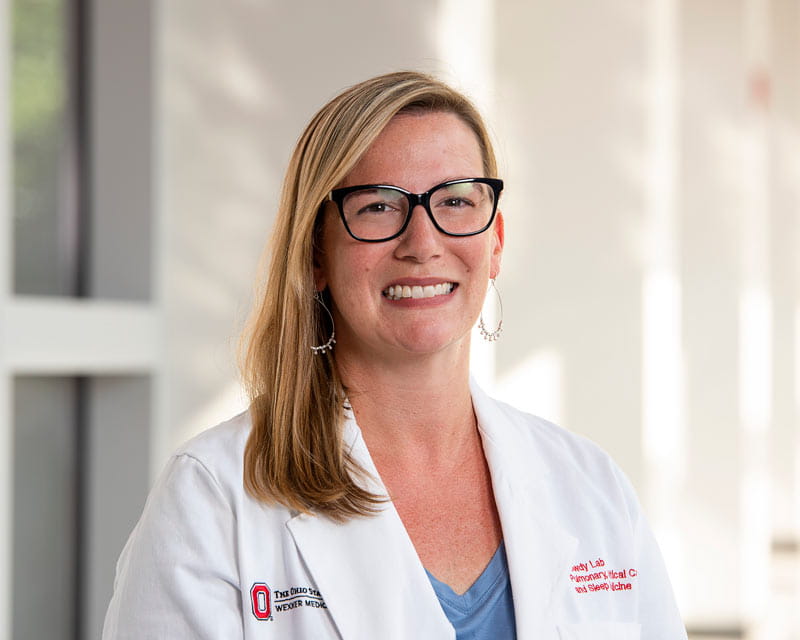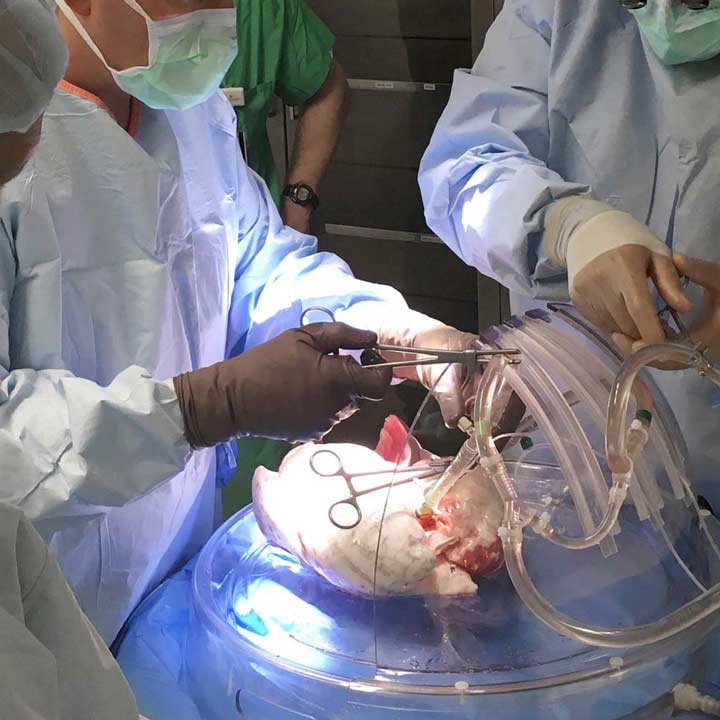
Ohio State Researchers Launch NIH-Funded Study on Ozone-Induced Pulmonary Inflammation
 For people with end-stage chronic pulmonary disease, a lung transplant often is the only definitive treatment option. Unfortunately, some of the sickest patients may not be afforded the opportunity for this lifesaving therapy at some transplant centers. The lung transplant program at The Ohio State University Wexner Medical Center offers hope by paving the way in transplanting some of the most medically complex patients, thanks to new research protocols, patient care models and donor lung resuscitation technology.
For people with end-stage chronic pulmonary disease, a lung transplant often is the only definitive treatment option. Unfortunately, some of the sickest patients may not be afforded the opportunity for this lifesaving therapy at some transplant centers. The lung transplant program at The Ohio State University Wexner Medical Center offers hope by paving the way in transplanting some of the most medically complex patients, thanks to new research protocols, patient care models and donor lung resuscitation technology.
“What makes us particularly unique is that we accept a lot of patients who may not qualify at other centers because of age-related comorbidities that other programs may not find acceptable. We tend to take the higher-risk patients,” says medical director David Nunley, MD. “Most lung transplant programs around the country end up transplanting about one person out of every 10 who gets referred to them. Ohio State’s conversion rate is about one out of every six.”
For the last several years, Ohio State has consistently been in the top 15 out of 65 lung transplant programs nationwide. Annually, we perform about 60 lung transplants. Throughout the COVID-19 pandemic, Ohio State’s lung transplant program remained very active, while many other national programs were suspended.
“During the COVID pandemic, we transplanted 19 people who were desperately ill due to the effects of the virus,” Dr. Nunley says. “As of today, 17 of the 19 are still alive and thriving. We were very aggressive in selecting and transplanting these patients with very high-quality outcomes.”
Even though the program transplants patients with greater complexity than many other sites, Ohio State’s patient outcomes have remained consistent with national standards.
“The fact that we’re right in the mix here is actually a testament to our team,” Dr. Nunley says. “We have clinicians who were trained and gained experience at some of the historically premier transplant programs in the world. The expertise of our multidisciplinary team benefits our institution, our community and ultimately our patients.”
Throughout the transplant experience at Ohio State, patients receive comprehensive, personalized care from a dedicated team of clinicians — including pulmonary physicians, thoracic surgeons, nurses, physical therapists, pharmacists, nutritionists and social workers.
The outpatient team receives about 450 referrals a year to evaluate people for potential lung transplantation. While most come from Ohio, the program has received referrals from as far away as Texas and Florida, and even internationally. The evaluation process is intense and requires input from multiple disciplines as patients are evaluated based on their medical health and physical conditioning, vaccination status and cancer screening status. To advance rehabilitation research, patients are assessed prior to transplant with a goal of seeing how outcomes improve when a person’s physical condition is enhanced.
Unlike other programs where transplant patients tend to be assigned to surgical services, Ohio State has a dedicated hospitalist team that works specifically with our transplant pulmonologists to care for patients who may require admission a year or two following their lung transplant. These internal medicine hospitalists are adept at managing more medical-focused needs. Should patients require intensive levels of care, they’re admitted to the medical intensive care unit where their care is provided by faculty members from our Division of Pulmonary, Critical Care and Sleep Medicine.
Ohio State’s lung transplant team has also been advancing technology and research to expand the donor pool, evaluate suitability of donor grafts and set patients up for superior outcomes. This includes 10 to 12 research protocols dedicated to exploring investigational medications to prevent or treat organ rejection.
“Unfortunately, lung transplant has the highest incidences of rejection complications among solid organ transplants,” Dr. Nunley says. “Current medications are toxic in the long-term and, even despite their use, there can be rejection responses that occur years out from the transplant that can be particularly resistant to further therapies. We’d like to prevent or forestall these as long as possible.”
Lungs are the most fragile organs to transplant, and Ohio State has been pioneering methods that can improve and expand the number of viable donor organs. Only one out of every three programs nationwide is using this novel method known as ex-vivo lung perfusion (EVLP), which can repair and resuscitate select donor lungs that may otherwise be considered unsuitable for transplantation. Ohio State’s continued research in this area includes the use of electrical impedance as a noninvasive method for measuring lung quality as assessed by tissue edema in an animal model of normothermic EVLP. By improving the understanding of graft function pre- and post-transplant, this modality holds the potential to revolutionize care for transplant patients.
Ohio State is also one of few locations in Ohio offering extracorporeal membrane oxygenation (ECMO) to select people with end-stage pulmonary disease in need of a transplant. The earliest use of ECMO was to support patients post-transplant for a few days until their new lungs were able to sustain them.
“As we’ve gotten more experience with ECMO, we are now using it for people who’ve been evaluated and accepted for transplant, but who may be deteriorating rapidly and not yet matched with a donor,” Dr. Nunley says. “We continue to think outside the box in terms of how we can give patients the best chance to ultimately bridge them to lifesaving therapy.”
Learn more about innovations in care and research from the Division of Pulmonary, Critical Care and Sleep Medicine.